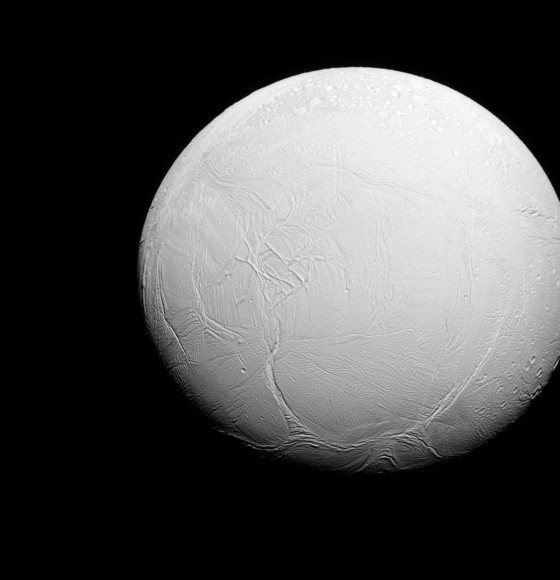Space Swoon: Enceladus is a moon divided (by different hemispheres)
True story: I can’t spell Enceladus. I just cut and paste. Enceladus. Just cut and pasted that. Enceladus. And again! But I can appreciate this image of Enceladus (C+P), courtesy of Cassini.
Enceladus is a world divided. To the north, the terrain is covered in impact craters, much like other icy moons. But to the south, the record of impact cratering is much more sparse, and instead the land is covered in fractures, ropy or hummocky terrain and long, linear features.
Lit terrain seen here is on the trailing side of Enceladus. North on Enceladus is up. The image was taken in visible green light with the Cassini spacecraft narrow-angle camera on July 27, 2015.
The view was obtained at a distance of approximately 70,000 miles (112,000 kilometers) from Enceladus and at a Sun-Enceladus-spacecraft, or phase, angle of 25 degrees. Image scale is 0.4 miles (0.7 kilometers) per pixel.
The Cassini mission is a cooperative project of NASA, ESA (the European Space Agency) and the Italian Space Agency. The Jet Propulsion Laboratory, a division of the California Institute of Technology in Pasadena, manages the mission for NASA’s Science Mission Directorate, Washington. The Cassini orbiter and its two onboard cameras were designed, developed and assembled at JPL. The imaging operations center is based at the Space Science Institute in Boulder, Colorado.
For more information about the Cassini-Huygens mission visit http://saturn.jpl.nasa.gov or http://www.nasa.gov/cassini . The Cassini imaging team homepage is at http://ciclops.org .
Credit: NASA/JPL-Caltech/Space Science Institute




